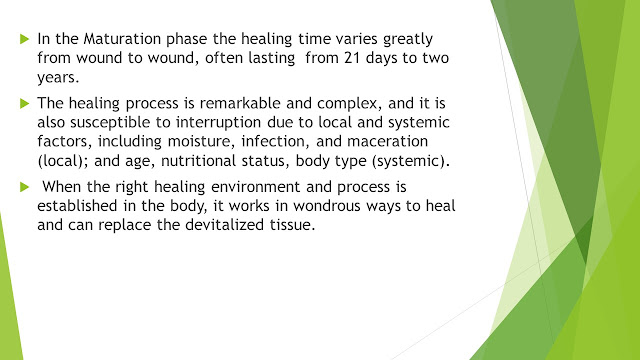If you want a brief explanation of this content in English and Tamil visit my YouTube channel . kindly post your comments and suggestions below.
Channel Link:
https://www.youtube.com/channel/UCZrabu-CtMa5AEexu1j2GNw
English video:https://youtu.be/kzaVAWAZNdQ
Tamil video:https://youtu.be/vJ-uj5hlwno
TISSUE REGENERATION:
Regeneration is a type of healing in which the new growth completely restores the portions of damaged tissue, And get it to their normal state.
A part of organism’s tissue that is traumatized by external forces or partially lost and based on the remaining part ,it grows as the same structure and function as the lost part. This repair process is called tissue regeneration.
Tissue regeneration includes the regeneration of epithelial tissue, fibrous tissue, cartilage tissue, bone tissue, blood vessels, muscle tissue, and nerve tissue.
There are 3 general categories:
1. tissues in which cell replication is a continuous process regenerate quickly –eg: epithelial cells – skin, mucous membrane, uterine lining etc..
2. Other tissues has the ability to replicate , but do it infrequently. These tissue takes longer time to regenerate . These includes liver, kidney, smooth muscle cells .
3.some cells are normally unable to replicate including nerve cells (neurons) , skeletal and cardiac muscle nerve cells meaning that damaged tissue cannot be replaced.
Extensively damaged tissue is mainly replaced by the fibrous tissue because the functions of the original tissue are lost.
STAGES OF WOUND HEALING:
Phase 1: Hemostasis Phase
Hemostasis is the first phase of healing. and this phase begins at the onset of injury, and the main function is to stop the bleeding.
In hemostasis phase, the body activates its emergency repair system which is the blood clotting system, and it forms a dam to block the drainage to prevent bleeding.
During this process, the platelets come in contact with the collagen, resulting in the activation and aggregation.

There is an enzyme called thrombin which is at the center, and it initiates the formation of a fibrin mesh, which strengthens the platelet clumps into a stable clot.
Phase2: Defensive/Inflammatory Phase
If Phase 1 is primarily about coagulation, the second phase, called the Defensive/Inflammatory Phase, focuses on destroying bacteria and removing debris—essentially preparing the wound bed for the growth of new tissue.
During Phase 2, neutrophils which is a type of white blood cells enter the wound to destroy bacteria and remove debris.
The neutrophils {type of WBC} multiplies at the wound site between 24 and 48 hours after injury, reducing greatly in number after three days.
As the [WBC] white blood cells leave the site, a specialized cells called macrophages arrive to continue for the clearing of debris.
The macrophages also secrete a growth factors and proteins that attract the immune system cells to facilitate tissue repair at the wound site.

The Inflammatory phase lasts for four to six days and is mostly associated with edema, erythema (reddening of the skin), heat and pain.
Phase 3: Proliferative Phase
When the wound is cleaned out, the wound enters the Proliferative Phase, where the main function is to fill and cover the wound.
The Proliferative phase features three distinct stages:
1) filling the wound;
2) contraction of the wound margins; and
3) covering the wound (epithelialization).
During the first stage i.e. filling the wound a shiny, deep red granulation tissue fills the wound bed with connective tissue, and a new blood vessels are formed.
During the second stage i.e. the contraction of the margins, the wound margins contract and pull the margins toward the center of the wound.
In the third stage i.e. covering the wound/ epithelialization, the epithelial cells arise from the wound bed or margins and begin to migrate across the wound bed in leapfrog fashion until the wound is covered with epithelium.

The Proliferative phase lasts from four to 24 days
Phase4: Maturation Phase
Healing begins with Hemostasis
During the Maturation phase, the new tissue matures slowly and gains its strength and flexibility.
The collagen fibers reorganize the tissue remodels and matures . there will be a overall increase in tensile strength (though maximum strength is limited to 80% of the pre-injured strength).
In the Maturation phase the healing time varies greatly from wound to wound, often lasting from 21 days to two years.
The healing process is remarkable and complex, and it is also susceptible to interruption due to local and systemic factors, including moisture, infection, and maceration (local); and age, nutritional status, body type (systemic).
When the right healing environment and process is established in the body, it works in wondrous ways to heal and can replace the devitalized tissue.



















Comments
Post a Comment
Thank you for supporting me . ;I'll try my level best to give the accurate and updated knowledge in all the topics . please visit my YouTube channel named Nursing Abstract ; for viewing a brief explanation in both Tamil and English . see you again in my next post.